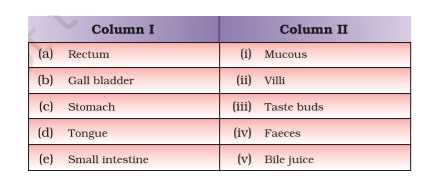Match the electrochemical behaviour of metals in Column I with the examples listed in Column II .

Text Solution
(A)−(p)(q)(s)B−(r)(C)−(p)(q)(D)−(r)(s)
|
Topper's Solved these Questions
- ELECTROCHEMISTRY BOOK - MODERN PUBLICATIONCHAPTER - ELECTROCHEMISTRY EXERCISE - COMPETITION FILE (OBJECTIVE TYPE QUESTIONS)Matching Type Questions
1 Videos
- ELECTROCHEMISTRY BOOK - MODERN PUBLICATIONCHAPTER - ELECTROCHEMISTRY EXERCISE - COMPETITION FILE (OBJECTIVE TYPE QUESTIONS) Integer type or Numerical Value Type Questions
11 Videos
- ELECTROCHEMISTRY BOOK - MODERN PUBLICATIONCHAPTER - ELECTROCHEMISTRY EXERCISE - COMPETITION FILE (OBJECTIVE TYPE QUESTIONS) D MULTIPLE CHOICE QUESTIONS
12 Videos
- D AND F-BLOCK ELEMENTSBOOK - MODERN PUBLICATIONCHAPTER - D AND F-BLOCK ELEMENTSEXERCISE - UNIT PRACTICE TEST
12 Videos
- GENERAL PRINCIPLES AND PROCESSES OF ISOLATION OF ELEMENTSBOOK - MODERN PUBLICATIONCHAPTER - GENERAL PRINCIPLES AND PROCESSES OF ISOLATION OF ELEMENTSEXERCISE - COMPETION FILE (Integer Type Numerical Value Type Questions)
5 Videos
Similar Questions
Knowledge Check
Match the type of immunity listed in Column I with the examples listed in Column II the correct combination of alphabets of the two Column.
 AA = s, B = t, C = q, D = rBA = t, B = s, C = r, D = pCA = p, B = q, C = r, D = tDA = s, B = r, C = t, D = q
AA = s, B = t, C = q, D = rBA = t, B = s, C = r, D = pCA = p, B = q, C = r, D = tDA = s, B = r, C = t, D = qMatch the complexes in Column I with their properties listed in Column II
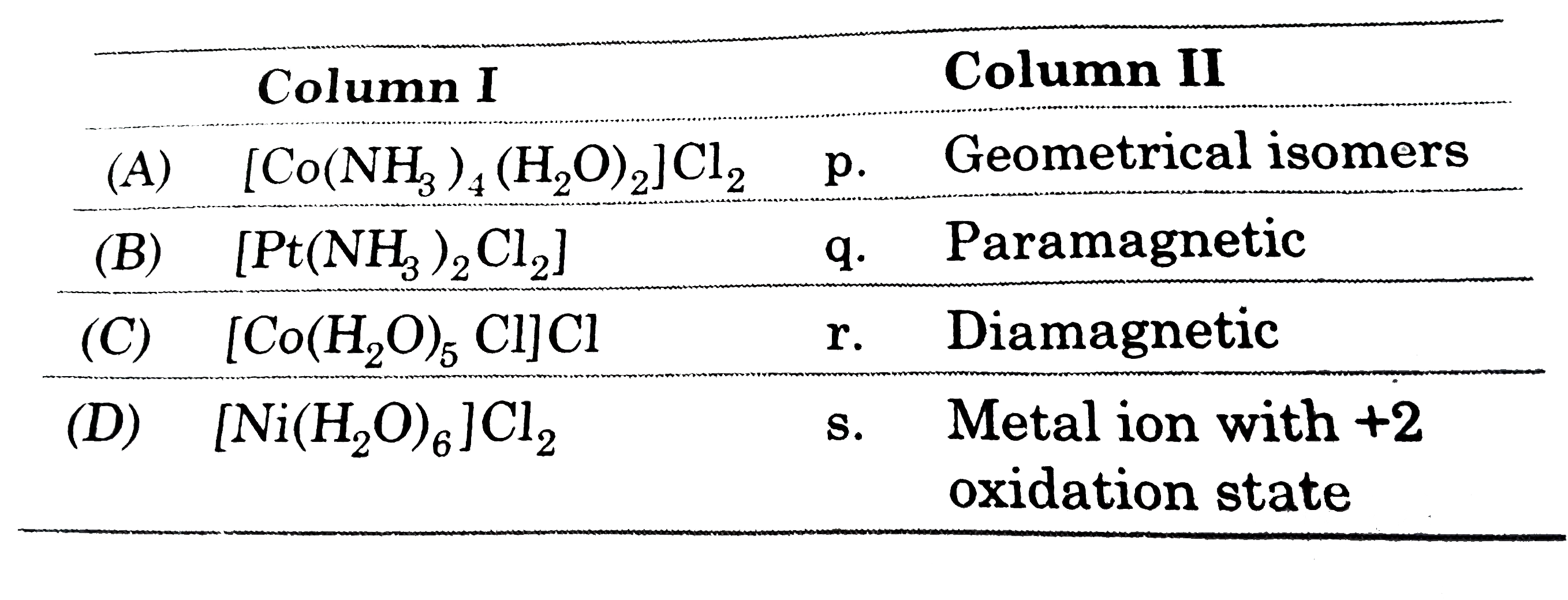 AABCD4231BABCD3142CABCD2134DABCD1342
AABCD4231BABCD3142CABCD2134DABCD1342Match the type of immunity listed in column I with the examples listed in column II. Choose the answer that gives the correct combination of alphabets of the two columns
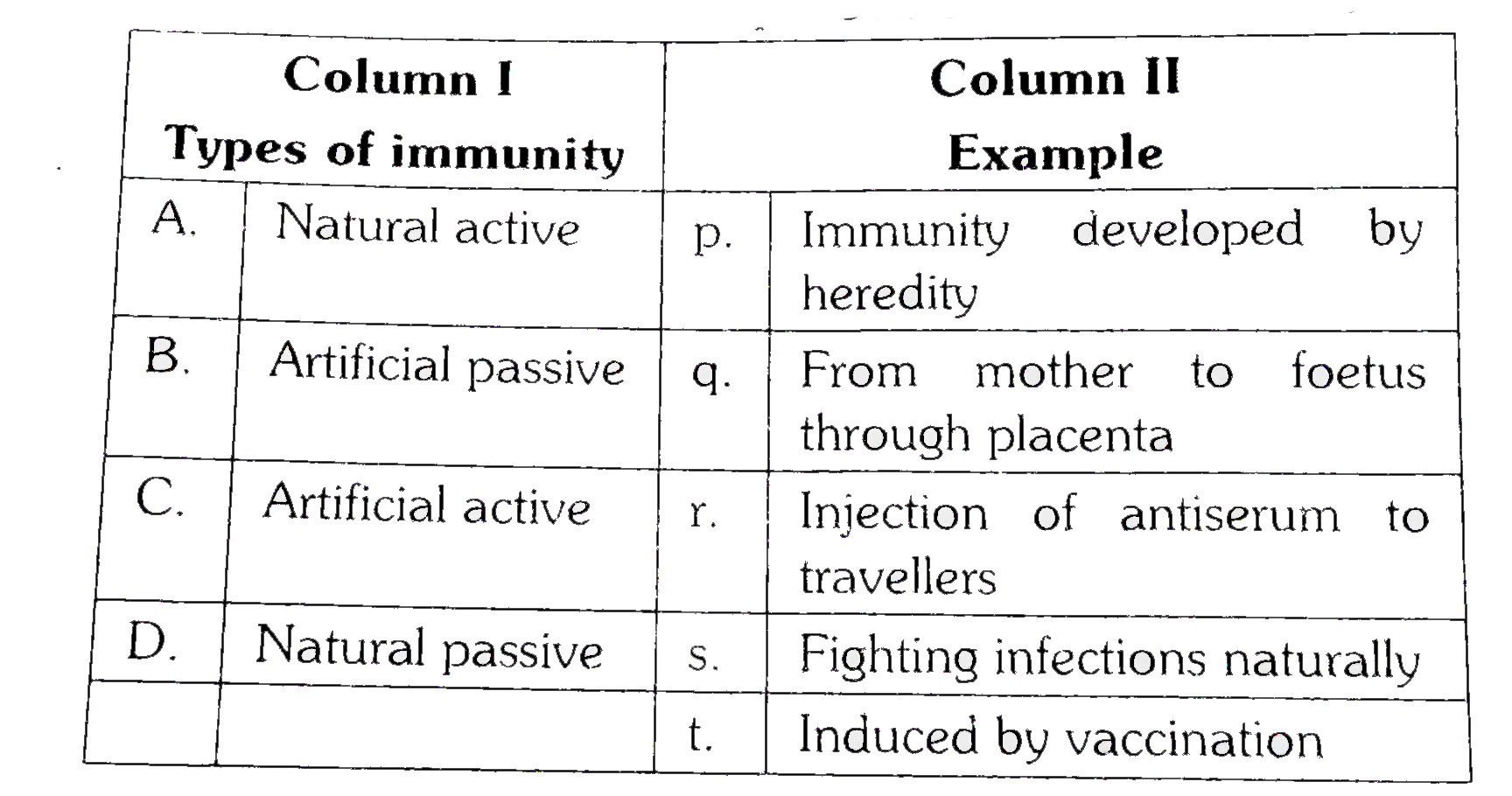 AA→s,B→t,C→q,D→rBA→t,B→s,C→r,D→pCA→p,B→q,C→r,D→tDA→s,B→r,C→t,D→q
AA→s,B→t,C→q,D→rBA→t,B→s,C→r,D→pCA→p,B→q,C→r,D→tDA→s,B→r,C→t,D→q
Match the type of immunity listed in column I with the examples listed in column II. Choose the answer that gives the correct combination of alphabets of the two columns

View SolutionMatch the polymers in Column I with the characteristic listed in Column II.
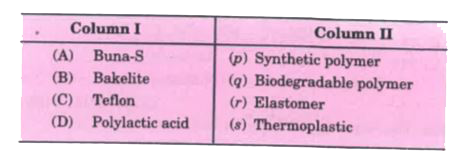
View SolutionMatch the type of the fruits in column I with the examples listed in column II choose the anser which gives the correct combination of the two columns
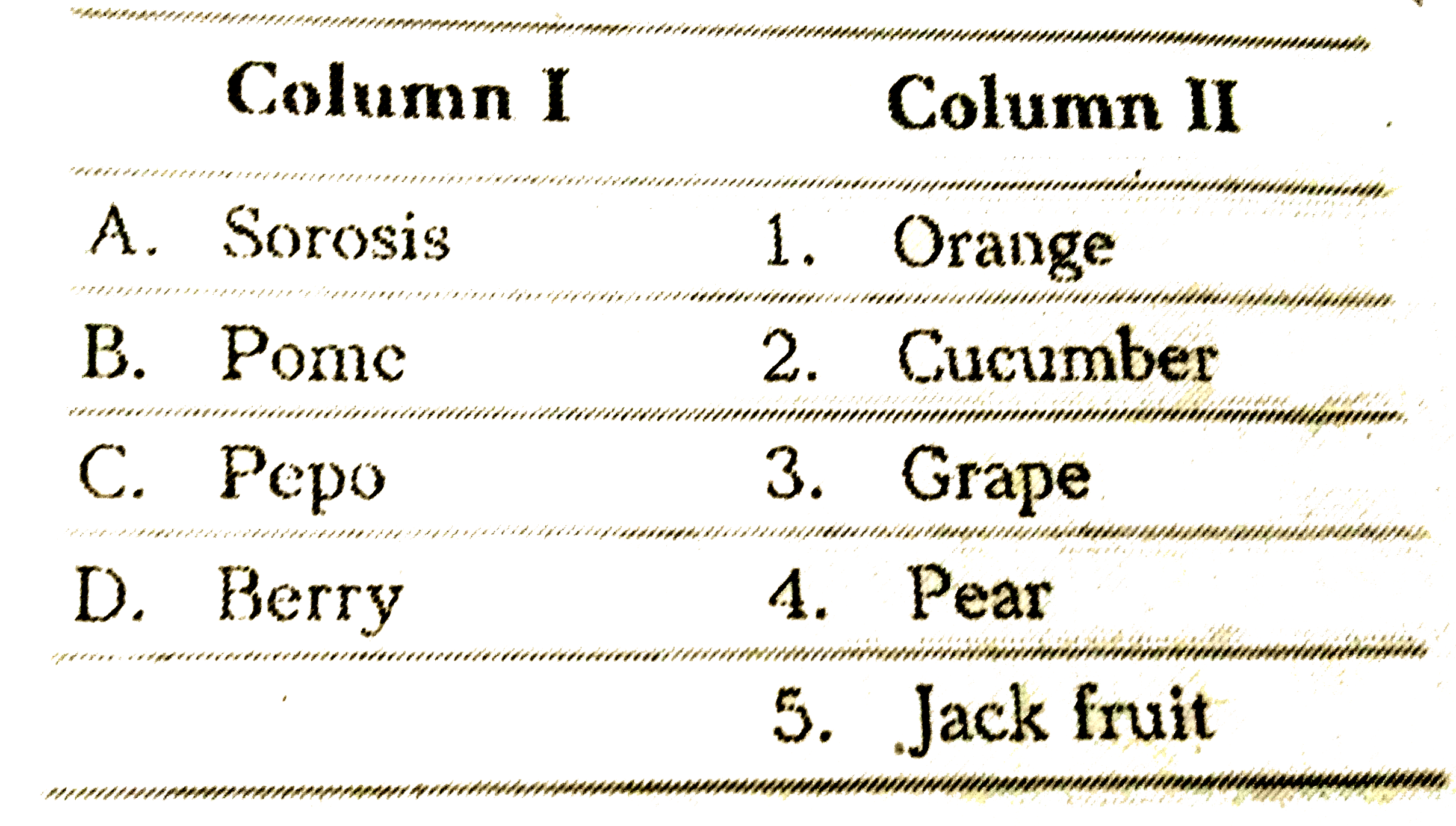
View SolutionMatch the animals in Column I with their mode of feeding listed in Column II
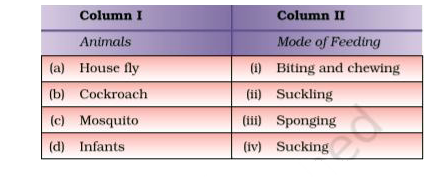
View SolutionMatch laws of chemical combinations in column I with the examples followed in column II.

View Solution

